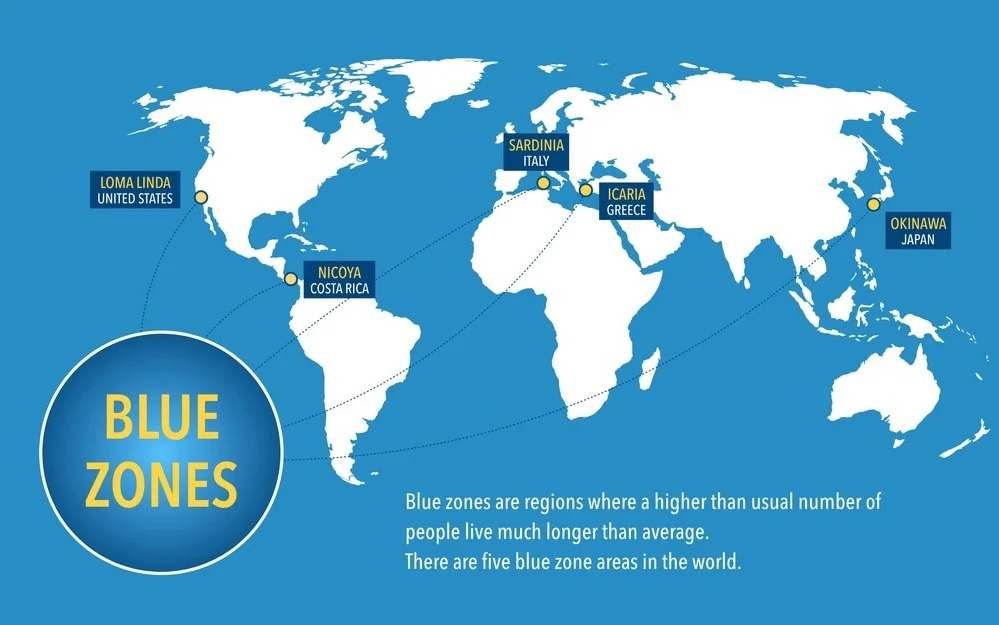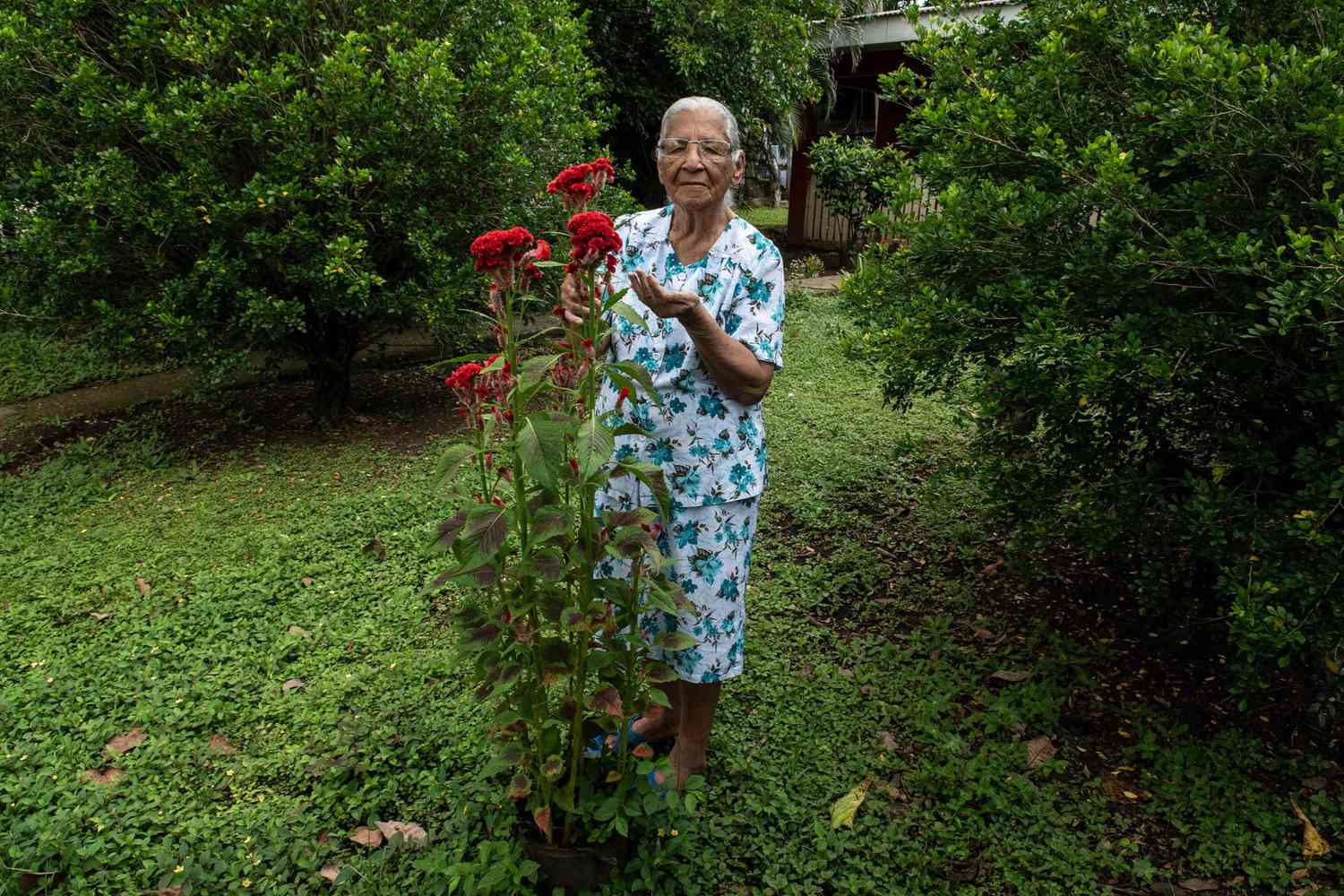Dan Buettner grew up in the Midwest during the 1960s, raised on a diet many American kids knew well. Dinner often meant boxed macaroni glowing in yellow cheese or hot dogs wrapped in buttery crescent rolls.
“We didn’t know better,” he says, recalling those familiar meals. But his path would soon veer far from that kitchen table, taking him across the globe in search of something deeper—how some people live not just longer, but better.
He eventually found his answers in scattered corners of the world—places where turning 100 doesn’t surprise anyone. In these rare pockets of the planet, called Blue Zones, he discovered people aging gracefully, free of the chronic illnesses common in his own country.

These vibrant, long-living communities had something in common—and it wasn’t gym memberships or protein shakes. Their diets looked nothing like the meals from Buettner’s childhood. Instead, daily meals were built on humble, natural ingredients.
Whole grains, leafy greens, beans, and nuts made up the bulk of what they ate. “The four pillars of every longevity diet in the world are whole grains, greens, nuts, and beans,” Buettner says. They weren’t cutting carbs—they were choosing the right ones.
“When you crunch the numbers,” he explains, “it’s very clear that it’s a 90% to 100% plant-based, very-high-carbohydrate diet. About 65% carbs, but not simple carbs like muffins and cakes—complex carbs.”
Related Stories
Dan Buettner has gained fame for popularizing the concept of Blue Zones and has shared his insights on longevity in a new book and a Netflix docuseries. Blue Zones, while representing diverse cuisines from around the world, consistently emphasize the importance of foods like beans, nuts, whole grains, herbs, and green vegetables. Irrespective of geographical location, these diets tend to be low in fat and rich in carbohydrates.
Buettner suggests that those looking to emulate the dietary patterns of the Blue Zones should aim for a diet that comprises about 95% plant-based foods while limiting the intake of red meat. However, there are alternative ways to ensure an adequate protein intake without resorting to animal products.
Research indicates that the optimal daily protein intake ranges from half to three-quarters of a gram of protein per pound of body weight, which translates to approximately 60-90 grams of protein for a person weighing 120 pounds, for example.

Protein plays a crucial role in tissue repair and muscle development, even though residents of the Blue Zones typically eschew gym workouts. To meet protein needs on a Blue Zones diet, focus on nutrient-dense sources such as legumes, with occasional servings of fish, dairy, and eggs.
Buettner has documented some of his favorite recipes from Blue Zones regions in his book, “The Blue Zones Secrets for Living Longer.” This compilation features dishes and ingredients from Ikaria, Greece; Sardinia, Italy; Okinawa, Japan; Nicoya, Costa Rica; and Loma Linda, California.
Whether the Blue Zone cuisine hails from the serene Costa Rican coastline or the bustling kitchens of California, one ingredient consistently takes center stage: beans. Beans, known for their high carbohydrate and fiber content, have faced criticism from some dieters due to their incompatibility with high-fat, low-carb eating plans like the keto diet. However, Buettner is a staunch advocate of including beans in one’s daily diet.

“You can get very successful with a diet if you tell people they can eat what they like to eat — meat or cheese or eggs and all that,” Buettner stated. “I draw from people who’ve achieved the health outcomes we want. And I can tell you beyond a shadow of a doubt that they’re eating about a cup of beans a day.”
One of his cherished bean dishes is a Greek “longevity stew” composed of fennel, black-eyed peas, olive oil, tomato, and garlic. This dedication to beans aligns with scientific research, which suggests that individuals who prioritize vegetables and other plant-based foods while minimizing their consumption of processed and red meat are less likely to experience premature death and are more likely to maintain heart health.
Remarkably, in the Blue Zones, there is no need for restrictive diets or constant calculations of macronutrient ratios. Rather, the environments in which these individuals reside naturally promote their well-being. Their diets are free from saturated fats and excessive sugars, including meats, dairy, and desserts.
Traditionally, Blue Zone inhabitants consume meat approximately five times a month, with portions typically limited to three to four ounces of pork, smaller than an iPhone.

When it comes to bread, Blue Zone residents lean towards fermented varieties like sourdough, as opposed to plain white yeasted slices. Additionally, they complement small servings of pasta and grains with staple ingredients such as fresh greens or beans.
Buettner highlights the synergistic pairing of grains and beans, which together provide a complete protein source akin to that found in meat-based dishes, but without the saturated fats and hormones.
Beyond diet, the Blue Zones also emphasize the significance of lifelong friendships, consistent physical activity (in the form of regular, short walks), and a sense of purpose in life. These built-in support systems are considered integral components of longevity, standing alongside the importance of consuming nutritious food.
Dan Buettner sums up his perspective by saying, “We keep beating this dead horse of diets and exercise and supplements.” In his view, the key to adopting the Blue Zones eating routine is to find plant-based recipes that resonate with you and make them a regular part of your culinary repertoire.

Most of the recipes featured in his books are devoid of meat or eggs and can be prepared in under 30 minutes.
Buettner concludes, “The secret to eating for 100 is to find the plant-based foods heavy with beans and grains and vegetables, and learn how to like them. If you eat a Blue Zones diet religiously, it’s probably worth eight to 10 extra years of life expectancy over a standard American diet. You take those years and you average them back into your life? It gives you about two hours a day to cook.”
Note: Materials provided above by the The Brighter Side of News. Content may be edited for style and length.
Like these kind of feel good stories? Get the Brighter Side of News’ newsletter.
The post High-carb diets may be the key to living longer appeared first on The Brighter Side of News.
Leave a comment
You must be logged in to post a comment.